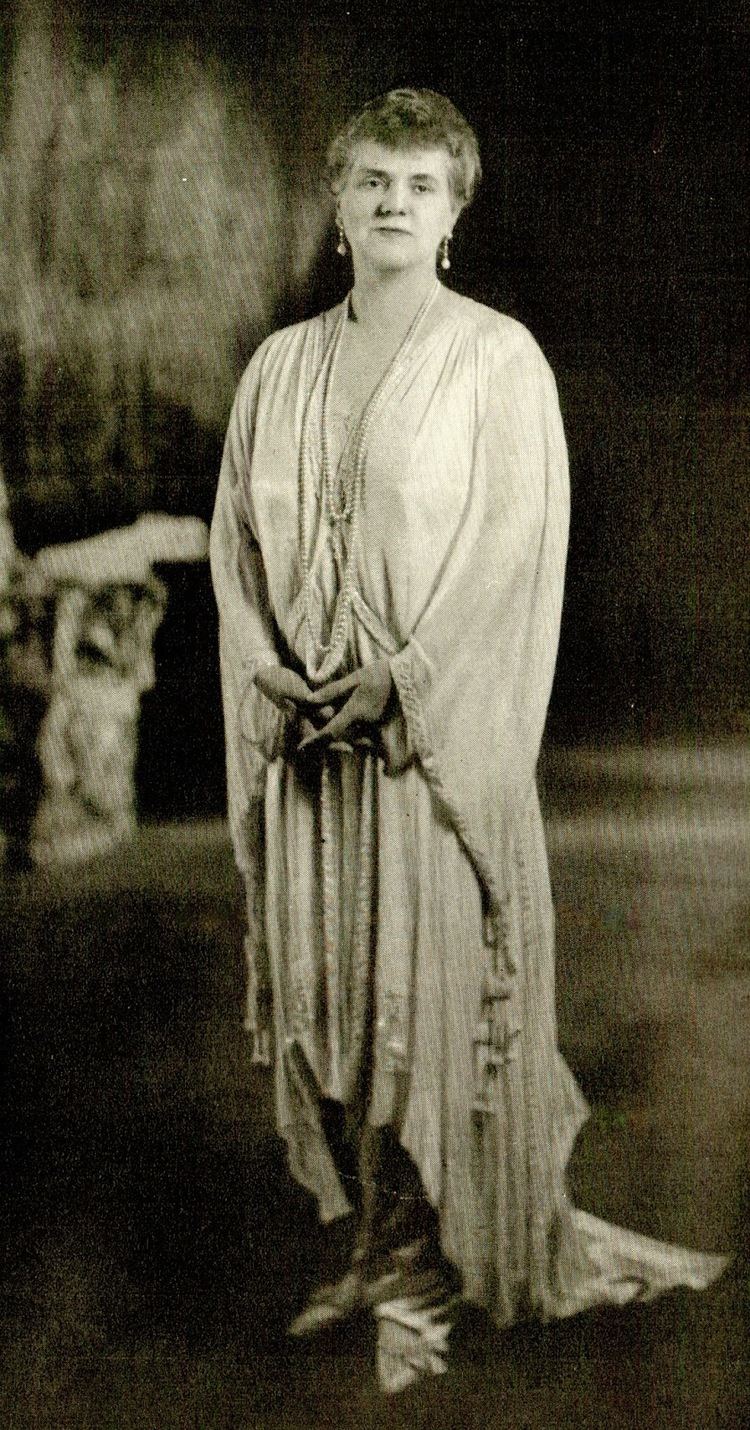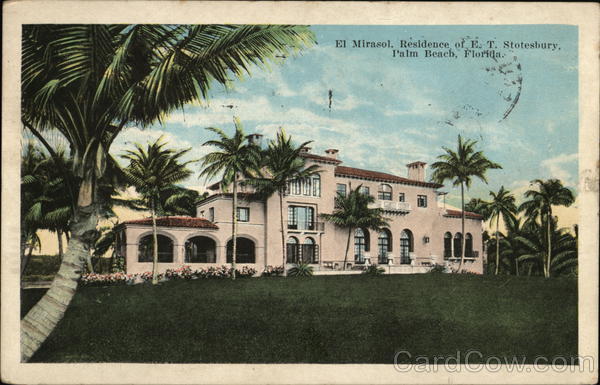E T Stotesbury
Eighty years ago, after E.T. Stotesbury’s death in 1938, his wife Eva donated a portion of the Whitemarsh Hall sculpture collection to the Philadelphia Museum of Art (PMA). The donation of 18th century French sculpture, included two large 9-1/2-ft. tall urns that were subsequently placed inside the West Entrance of the Museum.
Returning to the map we see that E.T. Stotesbury built a home on Hillcrest and set out several lots intended for development. The homes in the area to the bottom right of Hill Crest, along the present Hillcrest Avenue are already in place and pre-date the later R.M. Webb development. Whitemarsh Hall (Edward T. Stotesbury mansion), Wyndmoor, Pennsylvania (1916–21), Horace Trumbauer, architect. Whitemarsh Hall was a large estate located on 300 acres (1.2 km 2) of land in Wyndmoor, Pennsylvania, US, and owned by banking executive Edward T. Images from this holding. Holding Information Collection: Stotesbury Collection Institution: Athenaeum of Philadelphia Client Name: Stotesbury, E. (2005.06) Quantity: 14 Sheets Local Call: GRB.004 Item. Stotesbury was platted in 1893 when the railroad was extended to that point. The village was named for E. Stotesbury, a railroad agent. A post office was established at Stotesbury in 1893, and remained in operation until 1985. STOTESBURY et al. November 21, 1892. Statement by Mr. Justice BREWER: 1. On December 19, 1870, the firm of Harris & Stotesbury appealed to.
As part of the upcoming renovation of the West Entrance, the PMA will be de-accessioning the urns and has offered them to the Springfield Township Historical Society. PMA is not selling the urns. The only stipulation is that PMA bear no cost for re-locating the urns. In partnership with Springfield Township, the urns will be moved to the new Springfield Township Municipal Campus on September 19, 2019.
Each of the urns is a composite of carved limestone and a cast cementitious material. The cast elements, including the top rims and bases, appear to be modern additions to earlier ornamental limestone sections. The decorative frieze of one urn depicts the Greek god Apollo (Figures 1 & 2), while the other urn shows marine deities (Figures 3 & 4).
It is possible the urns were produced in the workshop of Jules-Édouard Visseaux (1854-1934), whose work was introduced to the Stotesburys by English art dealer Sir Joseph Duveen. Visseaux and his artisans operated out of a studio in the Saint-Ouen district on the northern outskirts of Paris, producing urns, statues and fountains of terra cotta, stone and lead.1
While at Whitemarsh Hall, the urns were positioned at the southeast and southwest corners, respectively, of the Main Fountain (Figures 5-7). As shown in Fig. 7, the urns were used as planters.
Fig. 5: Aerial view of Whitemarsh Hall. Photo courtesy of the Springfield Township Historical Society.
Fig. 6: Photo looking south toward the Large Fountain of the Main Garden. Photo courtesy of the Springfield Township Historical Society.
 Springfield Township has already constructed a reinforced concrete foundation for each of the urns. The foundations are located on either side of the entrance to the Library on Hawthorne Lane.
Springfield Township has already constructed a reinforced concrete foundation for each of the urns. The foundations are located on either side of the entrance to the Library on Hawthorne Lane.There will need to be conservation of the urns. The scope of the conservation will include cleaning, consolidation, minor repairs, repointing, and conservation oversight of the de-installation, transport, and installation. Kreilick Conservation will donate all necessary conservation. Kreilick will also prepare a report documenting the effort. The report will include recommendations for subsequent maintenance.
Several fund-raisers have been held, and we would like to acknowledge our friends in the community who supported these successful events. In December 2018, an Open House of the Wheel Pump Inn was hosted by B.Q. Basement Systems. Sponsors and contributors included Image 360, Dan Helwig Realtors, Chadds Ford Winery, Kreilick Conservation, Revolving Doors, and Seedling and Sage. In April 2019, Dr. David Contosta, Professor of History at Chestnut Hill College, gave an encore presentation of his research on Erdenheim Farm and Carson Valley. The proceeds of this event will be used for the urn relocation project. In May 2019, the Wyndmoor Hose Company and the Flourtown Fire Company organized a very successful car wash. In addition to the proceeds from these events, funds remaining from the completed restoration of the Black Horse Inn will be used for the urn relocation project.After the urns are relocated, there will be on-going expenses including annual plantings, insurance, and maintenance. The urns will be protected during the winter months, as they were when originally displayed at Whitemarsh Hall.
Please consider making a tax-deductible contribution to this effort.
You may obtain the official registration and financial information of the Springfield Township Historical Society from the Pennsylvania Department of State by calling toll-free, within Pennsylvania, 1-800-732-0999.
T. Scott Kreilick
President, STHS
10002 Wayne Willcox, http://stotesbury.com/art/artpost1897/SculptureGardens.html
Note that in processing online payments, STHS is charged a processing fee. To insure 100% of your donation reaches us, you can send your donation by check.
For photographs and videos of the urns relocation, please visit our facebook page.
Edward Townsend 'Ned' Stotesbury (February 26, 1849 – May 16, 1938) was a prominent investment banker, a partner in Philadelphia's Drexel & Co. and its New York affiliate J. P. Morgan & Co. for over fifty-five years. He was involved in the financing of many railroads. Stotesbury, West Virginia, a coal mining town in Raleigh County, is named for him, as well as his equestrian estate, the Stotesbury Club House. Several of the palatial estates he built with his second wife have been demolished in the years since his death.
Early life and first marriage[edit]
Stotesbury was born in Philadelphia, Pennsylvania of Quaker parentage, and attended Union Business College (now Peirce College).[1] His first wife was Frances Berman Butcher. Their first daughter, Helen Lewis Stotesbury (August 21, 1874 – September 9, 1874), died an infant. They had another daughter in 1877 and Frances died giving birth to a third on November 7, 1881 at the age of 31.
Career[edit]
Stotesbury got his start working for Drexel & Co., the well-known Philadelphia banking house founded by Francis Martin Drexel and later directed by his son Anthony Joseph Drexel. He was always punctual, never absent. He kept meticulous records of every penny he spent. When Drexel went into partnership with J.P. Morgan, Stotesbury received a lucrative post. In 1882, he was made a partner. Years later he often told the simple story of his success: 'Keep your mouth shut and your ears open.'
One of the significant services which he performed in the course of his business career was assisting in the floating of the International Chinese Loan of 1909. He was a director of the Reading Railroad, the Lehigh Valley Railroad, the Philadelphia Fidelity Bank, the Girard Trust Company, the Cambria Iron Company, Pennsylvania Steel Company, Latrobe Steel Company, Penn Mutual Life Insurance Company, Keystone Watch Company, and the Jessup and Moore Paper Company. He also served as the President of Philadelphia's Art Jury and Fairmount Park Art Association (now the Association for Public Art).[2]
Second marriage and later career[edit]
On January 18, 1912, after having been a widower for thirty-some years, Stotesbury married widow Eva Roberts Cromwell, becoming the stepfather of Oliver Eaton Cromwell, James H. R. Cromwell, and Louise Cromwell Brooks. James worked at Drexel and Company after his World War I service.
The couple's first project together was redecorating his Philadelphia townhouses at 1923-25 Walnut Street.[3] They went on to build three palatial estates:
- Whitemarsh Hall outside Philadelphia by architect Horace Trumbauer (1916–21, demolished 1980)
- El Mirasol in Palm Beach, Florida by architect Addison Mizner (1919, demolished 1950s)
- Wingwood House in Bar Harbor, Maine by architectural firm Magaziner, Eberhard & Harris (1927, demolished 1953)[4]

In 1927, Stotesbury's fortune was estimated at $100 million ($1.5 billion today). While he withdrew $55 million from his J.P. Morgan account during the Great Depression,[5] the stock market crash and the depression further drained the value of his fortune, leaving him with an estimated $4 million ($100 million today) at the time of his death in 1938.
Stotesbury died at eighty-nine on May 21, 1938 in Wyndmoor, Pennsylvania and was buried in The Woodlands Cemetery in Philadelphia.
Legacy[edit]
E T Stotesbury
Every year since 1927, the Stotesbury Cup Regatta has been held on the Schuylkill River in Philadelphia. It is one of the oldest and largest high school rowingregattas in the United States. Stotesbury was a member and one-time president of the Bachelors Barge Club, one of the rowing clubs in Philadelphia.
Stotesbury, West Virginia, a coal mining town in Raleigh County, was named for Stotesbury.[6] The town was the former home of eight-term U.S. SenatorRobert C. Byrd.
E T Stotesbury
The Stotesbury Club House, a building on Stotesbury's equestrian farm in Wyndmoor, Pennsylvania, was listed on the National Register of Historic Places in 1985.[7]
Edward and Eva Stotesbury are characters in the Stephen Sondheim musical Road Show (2008).

The land on which Whitemarsh Hall was built was developed into a town house complex named after Stotesbury.
Family[edit]
Stotesbury's second daughter, Edith Lewis Stotesbury (April 3, 1877 – 1935), married Sydney Emlen Hutchinson on December 25, 1903. His third daughter, Frances Butcher Stotesbury (November 7, 1881 – October 14, 1950), married John Kearsley Mitchell on January 5, 1909.
On February 14, 1922, his stepdaughter, Henrietta Louise Cromwell, a divorcee with two children, married General Douglas MacArthur. They divorced in 1929.[8]
His stepson, James H.R. Cromwell became a devoted New Dealer. One day in 1936, when Cromwell was then married to Doris Duke, Stotesbury told him, 'It’s a good thing you married the richest girl in the world because you will get very little from me. I made my fortune and I am going to squander it myself; not your friend Roosevelt.'
References[edit]
- ^'Friendly Hands Are Extended,' The Peircetonian,(Philadelphia, PA), September 1939.
- ^Heinzen, Nancy (2009). The Perfect Square: A History of Rittenhouse Square. Philadelphia, PA: Temple University Press. p. 110. ISBN1592139884.
- ^The townhouses, at the NE corner of 20th & Walnut Sts., were designed by architect Frank Furness for client Thomas McKean and his son in 1869.[1]Archived 2009-08-21 at the Wayback Machine
- ^Postcard of Wingwood House
- ^Peg Brickley (January 10, 2000). 'Wealth and folly and more'. Philadelphia Business Journal.
- ^Kenny, Hamill (1945). West Virginia Place Names: Their Origin and Meaning, Including the Nomenclature of the Streams and Mountains. Piedmont, WV: The Place Name Press. p. 605.
- ^'National Register Information System'. National Register of Historic Places. National Park Service. July 9, 2010.
- ^William Manchester, American Caesar: Douglas MacArthur 1880-1964, Little, Brown & Company (1978), p. 141
External links[edit]

- Edward T. Stotesbury at Find a Grave